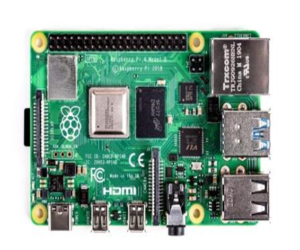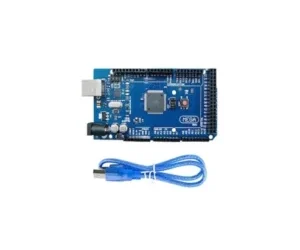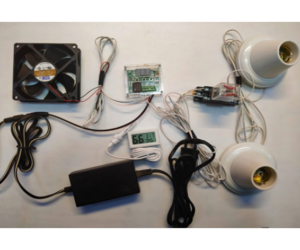Description
It also has a 16-MHz crystal oscillator and an USB connection and power connector, an ICSP header, and an reset button. The software for the board includes an USB controller that emulates the keyboard, mouse, and a serial port.
The board comes with everything you require to work with the microcontroller by connecting it to a computer via an USB cable or using an adapter. The Arduino Uno is different from other Arduino boards because it doesn’t use the FTDI USB-to-Serial driver chip. Instead, it uses the Atmega16U2 programed to act as a USB-to serial converter.
Characteristics of Arduino Uno R3:
- Microcontroller ATmega328 DIP
- Operating Voltage 5V
- Input Voltage (recommended) 7-12V
- Input Voltage (limits) 6-20V
- Digital I/O Pins 14 (of which 6 provide PWM output)
- Analog Input Pins 6
- DC Current per I/O Pin 40 mA
- DC Current for 3.3V Pin 150 mA
- Flash Memory 32 KB (ATmega328) of which 0.5 KB used by bootloader
- SRAM 2 KB (ATmega328)
- EEPROM 1 KB (ATmega328)
- Clock Speed 16 MHz
- Reset button: It’s used to reset the program that is loaded onto the microcontroller on the board. In the case of that Arduino Uno stops responding it is the on and off button that allows it to reset itself.
- Pins or input and output ports: are the pins that are to connect the components, sensors and actuators that require digital signals.
- USB port: It is used to connect an operating system(Conputer) and to transfer or load software to the microcontroller and also to provide power to the Arduino. It can also be used as an interface for serial transfers to the Arduino, for both sending and receiving data.
- USB interfacing chip: is responsible for managing communication via it’s USB port.
- Oscillator clock: It is the part that helps the Arduino run the program. It is responsible for setting the timing that each instruction of the program is executed.
- Power LED: It’s a tiny light source that turns on whenever the circuit is powered.
- Microcontroller: This is the brain on every Arduino-based board. This is the part responsible for the execution of the instructions in the software.
- Voltage regulator: This is used to regulate the amount of power that is delivered to the pins and making sure that the electrical connection we make to these pins will not be damaged.
- DC port: This port is is used to power the board in the event that USB powered power cannot be being used.
- Tension socket: Here are the pins that we will connect our circuit.
- Analog inputs: Socket with various analog input pins for the reading of analog inputs.
Arduino Uno pinout – Power Supply:
There are three ways to power Arduino Uno: Arduino Uno:
Barrel Jack The Barrel Jack or DC Power Jack can be used to power an Arduino board. This connector can be typically connected to an adapter for the wall. The card is powered by 5-20 V, however, the manufacturer suggests maintaining it at 7-12 Volts. At higher than 12 volts the regulators can overheat at a lower voltage it may not be enough.
VIN Pin The pin used to power Arduino Uno. Arduino Uno board with an external power source. The voltage should be within the limits mentioned above.
USB Cable when connected to a computer it delivers 5 volts at 500mA.
Arduino Uno Pinout – Analog IN:
Arduino Uno is a board that has 6 analog pins that make use of ADC (Analog to Digital Converter).
These pins are analog inputs but also serve as digital outputs, inputs, or digital inputs.
Arduino Uno Pinout – Digital Pins:
The pins 0-13 of Arduino Uno serve as digital input/output pins.
The pin 13 on the Arduino Uno is connected to the integrated LED.
For the Arduino Uno the pins 3,5,6,9 and 10 have been identified as PWM capable .
It is important to keep in your mind:
Each pin is able to provide up to 40 mA maximum. The suggested current is 20 milliamps.
The maximum amount of current that can be supplied by all pins is 200 milliamps.
Arduino Uno Pinout – ICSP Header:
The term ICSP is a reference to In-Circuit Serial Programming. The term was coined out of the program headers within this system (ISP). Manufacturers such as Atmel who work with Arduino have created their own serial programming headers in circuits. These pins permit users to program the firmware on Arduino boards. The Arduino board has six ICSP pins that are available within the Arduino board, which are connected to a computer by using a cable for programming.
Best Online Shopping website for Arduino. Here you get Arduino UNO R3 at a reasonable price in Karachi, Lahore, Islamabad, Rawalpindi, Sukkur, Peshawar, Multan, Quetta, Faisalabad and all over Pakistan.







Reviews
There are no reviews yet.